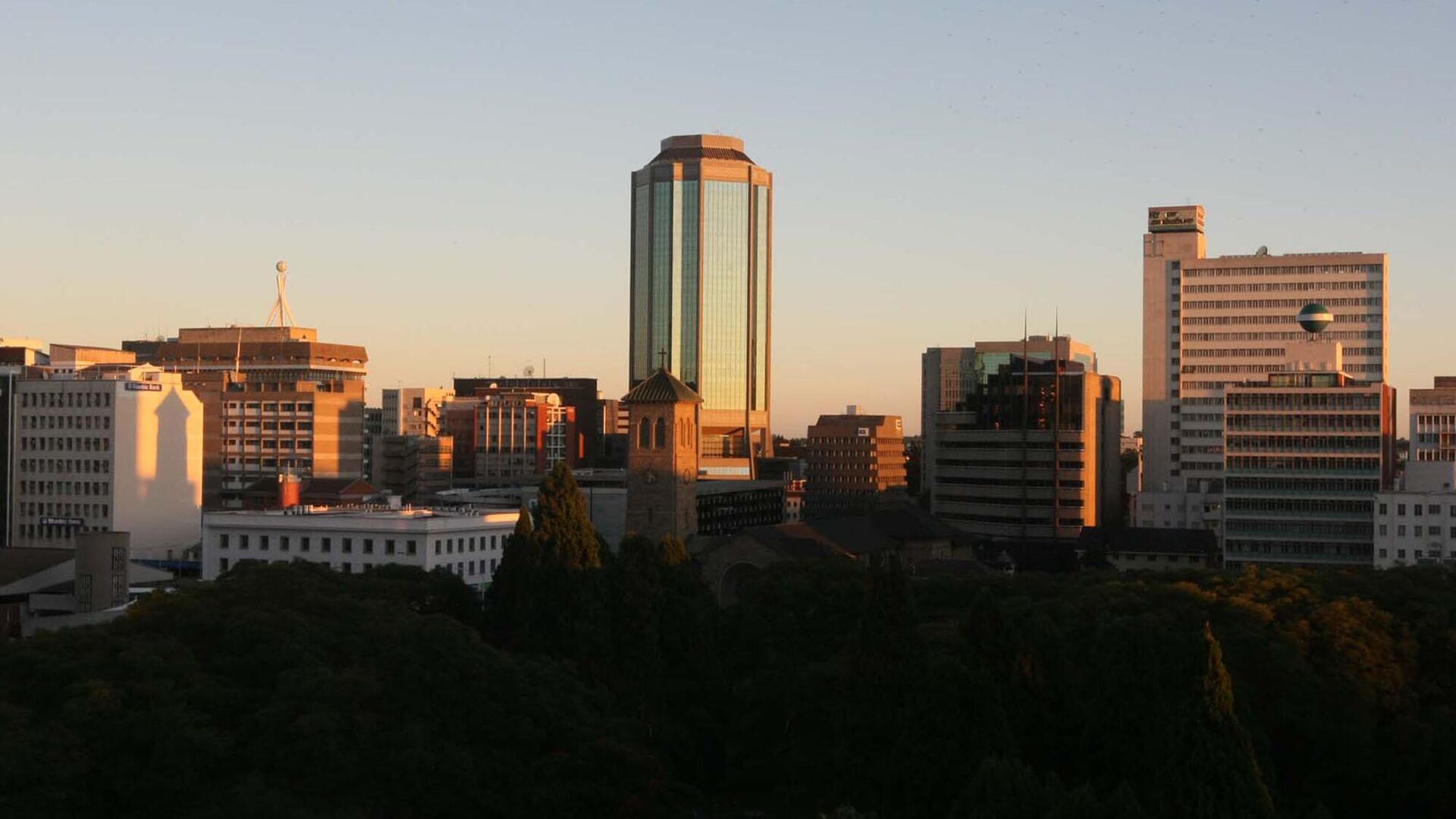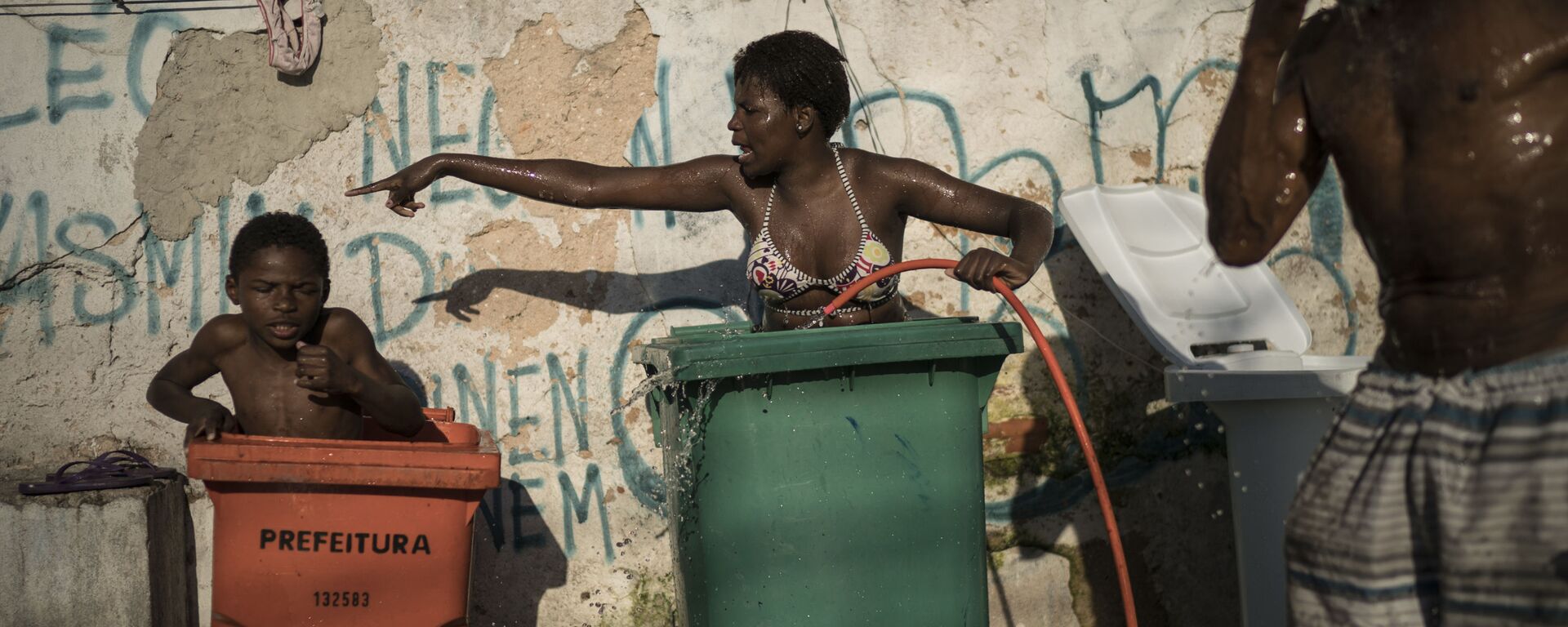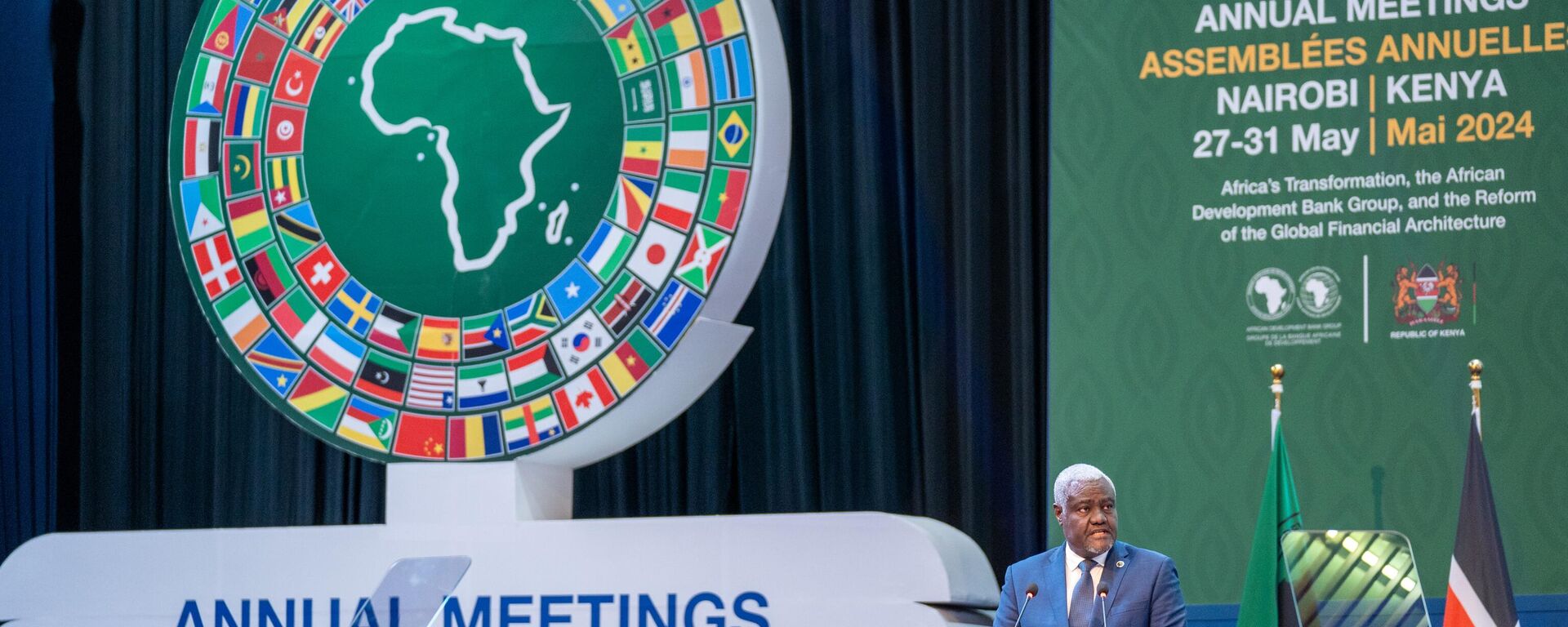https://en.sputniknews.africa/20240602/afdb-africa-remains-worlds-second-largest-growing-region-in-2024-2025-with-eastern-part-leading-1066844013.html
AfDB: Africa Remains World's Second-Largest Growing Region in 2024-2025, With Eastern Part Ahead
AfDB: Africa Remains World's Second-Largest Growing Region in 2024-2025, With Eastern Part Ahead
Sputnik Africa
The African Economic Outlook Report is a yearly publication which represents a collaborative effort between the UN Development Programme, the Development... 02.06.2024, Sputnik Africa
2024-06-02T16:39+0200
2024-06-02T16:39+0200
2024-06-03T12:04+0200
economy
east africa
south sudan
african development bank (afdb)
north africa
central africa
inflation
economic growth
west africa
southern africa
https://cdn1.img.sputniknews.africa/img/07e8/05/16/1066678812_0:95:2000:1220_1920x0_80_0_0_8b998d555adce68569e759309a38bf67.jpg
A total of 41 African countries (that is, 72% of the entire continent) are projected to show higher growth rates this year compared to last year, according to the latest African Development Bank’s African Economic Outlook.Moreover, in 2024 and 2025, the continent will maintain its position as the second fastest-growing region after the ever-growing Asia.African average growth rebounded to 3.7% in 2024 and 4.3% in 2025, above the predicted world average of 3.2%. In 2024, 17 African economies are expected to grow by over 5%. The number might reach 24 in 2025 as estimated growth increases.East Africa is predicted to lead this growth trajectory and surpass pre-2023 levels. Moderate to strong growth is expected in other regions.Despite growth, the continent still faces challenges.Africa might not reach most Sustainable Development Goals by 2030, according to the research. The latter claims that the majority of the world's extreme poor will live in Africa by 2030 unless steps are taken to stop the steepening poverty curve.The average consumer price inflation in Africa also rose by 3%, from 14% in 2022 to 17% in 2023. Higher local food prices due to domestic supply shortages caused by drought, liquidity overhangs from fiscal and monetary policy stimulus measures implemented in response to the pandemic in 2020–21, and the pass-through effects of currency depreciation against a strong US dollar fueled by high interest rates in the United States all contributed to the increase, the AfDB explained.Let's take a closer look at African regions' economic dynamics, starting with the leading eastern part of the continent.East AfricaThe economy of East Africa is expected to expand by 4.9% in 2024, which is more than three times the growth rate of 1.5% seen last year, despite the influence of two significant problems. One of the issues is the conflict in Sudan. The region's economy has been greatly affected by this, leading to a slowdown that has also affected South Sudan. As a result, the bank has revised its prior prediction of 5.1% growth by 0.2%.Besides the conflict, the region's economy is expected to withstand the recent abnormal rains in Kenya and Tanzania, as well as the drought in Somalia, Ethiopia, and South Sudan.Next year, East Africa's economy is expected to develop at a pace of 5.7%, which is 1% faster than Central Africa, the next closest region.However, it wasn't just on the positive side that the region ranked first: East Africa had the highest inflation in 2023 at 26.5%, with Sudan leading the way at 245.3%.Central AfricaCentral Africa is expected to grow at a rate of 4.1% this year and 4.7% next year.The revised forecast for 2024, which is 0.6% higher than the January 2024 projections, is mostly owing to anticipated economic development in Chad and the Democratic Republic of the Congo (DRC), which is expected to be driven by favorable metal prices.However, speaking about the results of last year, the AfDB noted that inflation in Central Africa rose by 3.5% to 10.3% in 2023, and in the DRC, the increase was 10.3% up to 19.9%.West AfricaWest Africa ranks second this year (4.2%) and third next year (4.4%).The upgrade for 2024 is 0.3% higher than the January 2024 predictions. This increase is due to the better growth in the biggest economies of the area, including Cote d’Ivoire, Ghana, Nigeria, and Senegal.Regarding 2023 inflation, the region comes in second with 20.3%, with Sierra Leone and Ghana topping the list.North AfricaNorth Africa is expected to see a growth rate of 3.6% in 2024 and 4.2% in 2025.However, there has been a downward revision of 0.3% for the 2024 forecast compared to the January 2024 projection. With the exception of Libya and Mauritania, the growth forecasts for all other nations in the area have been adjusted downward.The region's inflation rose to 8.1% last year, averaging 16.3%, driven by rising prices in Egypt and "geopolitical tensions."Southern AfricaThis part of the continent is expected to show the slowest growth: 2.2% in 2024 and 2.7% in 2025.The growth rates for these years have been revised upwards by 0.1% compared to the predictions made in January 2024. This increase is mostly due to a 0.7% rise in South Africa's predicted growth that compensated for the negative revisions in Angola, Botswana, Lesotho, Zambia, and Zimbabwe.Despite ranking last in Africa in terms of growth, only Southern Africa saw its inflation rate fall from 10.8% in 2022 to 8.6% in 2023, driven by declines in Angola, Botswana, South Africa and Zimbabwe.
https://en.sputniknews.africa/20240416/half-of-most-vulnerable-nations-face-income-gaps-with-rich-countries-world-bank-reports-1066094165.html
https://en.sputniknews.africa/20240601/afdb-annual-meeting-concludes-in-nairobi-what-was-on-agenda-1066831320.html
east africa
south sudan
north africa
central africa
west africa
southern africa
Sputnik Africa
feedback@sputniknews.com
+74956456601
MIA „Rossiya Segodnya“
2024
Christina Glazkova
https://cdn1.img.sputniknews.africa/img/07e7/0b/07/1063380906_0:0:673:674_100x100_80_0_0_79628b4d0cd9f29291a57aa13bbf9e7a.jpg
Christina Glazkova
https://cdn1.img.sputniknews.africa/img/07e7/0b/07/1063380906_0:0:673:674_100x100_80_0_0_79628b4d0cd9f29291a57aa13bbf9e7a.jpg
News
en_EN
Sputnik Africa
feedback@sputniknews.com
+74956456601
MIA „Rossiya Segodnya“
Sputnik Africa
feedback@sputniknews.com
+74956456601
MIA „Rossiya Segodnya“
Christina Glazkova
https://cdn1.img.sputniknews.africa/img/07e7/0b/07/1063380906_0:0:673:674_100x100_80_0_0_79628b4d0cd9f29291a57aa13bbf9e7a.jpg
economy, east africa, south sudan, african development bank (afdb), north africa, central africa, inflation, economic growth, west africa, southern africa, finance
economy, east africa, south sudan, african development bank (afdb), north africa, central africa, inflation, economic growth, west africa, southern africa, finance
AfDB: Africa Remains World's Second-Largest Growing Region in 2024-2025, With Eastern Part Ahead
16:39 02.06.2024 (Updated: 12:04 03.06.2024) Christina Glazkova
Writer / Editor
The African Economic Outlook Report is a yearly publication which represents a collaborative effort between the UN Development Programme, the Development Center of the Organization for Economic Co-operation and Development, and the African Development Bank (AfDB). It provides comprehensive analysis of 54 African economies.
A total of 41 African countries (that is,
72% of the entire continent) are projected to show higher growth rates this year compared to last year, according to the latest African Development Bank’s
African Economic Outlook.
Moreover, in 2024 and 2025, the continent will maintain its position as the second fastest-growing region after the ever-growing Asia.
African average growth rebounded to 3.7% in 2024 and 4.3% in 2025, above the predicted world average of 3.2%. In 2024, 17 African economies are expected to grow by over 5%. The number might reach 24 in 2025 as estimated growth increases.
East Africa is predicted to lead this growth trajectory and surpass pre-2023 levels. Moderate to strong growth is expected in other regions.
Despite growth, the continent still faces challenges.
“Africa’s future is bright, but need to make sure we tackle governance, transparency, accountability, and management of our natural capital. We need to make sure resources are used for the benefit of the people of this continent. […] The kind of resilience we are talking about cannot happen unless we deal with the issue of climate change.” the bank's president Akinwumi Adesina said.
Africa might not reach most Sustainable Development Goals by 2030, according to the research. The latter claims that the majority of the world's extreme poor will live in Africa by 2030 unless steps are taken to stop the steepening poverty curve.
The average consumer price inflation in Africa also rose by 3%, from 14% in 2022 to 17% in 2023.
Higher local food prices due to domestic supply shortages caused by
drought, liquidity overhangs from fiscal and monetary policy stimulus measures implemented in response to the pandemic in 2020–21, and the pass-through effects of currency depreciation against a strong US dollar fueled by high interest rates in the United States all contributed to the increase, the AfDB explained.
Let's take a closer look at African regions' economic dynamics, starting with the leading eastern part of the continent.
The economy of East Africa is expected to expand by 4.9% in 2024, which is more than three times the growth rate of 1.5% seen last year, despite the influence of two significant problems.
One of the issues is the
conflict in Sudan. The region's economy has been greatly affected by this, leading to a slowdown that has also affected
South Sudan. As a result, the bank has revised its prior prediction of 5.1% growth by 0.2%.
Besides the conflict, the region's economy is expected to withstand the recent
abnormal rains in
Kenya and Tanzania, as well as the
drought in Somalia, Ethiopia, and South Sudan.
Next year, East Africa's economy is expected to develop at a pace of 5.7%, which is 1% faster than Central Africa, the next closest region.
However, it wasn't just on the positive side that the region ranked first: East Africa had the highest inflation in 2023 at 26.5%, with Sudan leading the way at 245.3%.
Central Africa is expected to grow at a rate of 4.1% this year and 4.7% next year.
The revised
forecast for 2024, which is 0.6% higher than the January 2024 projections, is mostly owing to anticipated economic development in Chad and the Democratic Republic of the Congo (DRC), which is expected to be driven by favorable metal prices.
However, speaking about the results of last year, the AfDB noted that inflation in Central Africa rose by 3.5% to 10.3% in 2023, and in the DRC, the increase was 10.3% up to 19.9%.
West Africa ranks second this year (4.2%) and third next year (4.4%).
The upgrade for 2024 is 0.3% higher than the January 2024 predictions. This increase is due to the better growth in the biggest economies of the area, including Cote d’Ivoire, Ghana,
Nigeria, and
Senegal.Regarding 2023 inflation, the region comes in second with 20.3%, with Sierra Leone and Ghana topping the list.
North Africa is expected to see a growth rate of 3.6% in 2024 and 4.2% in 2025.
However, there has been a downward revision of 0.3% for the 2024 forecast compared to the January 2024 projection. With the exception of
Libya and Mauritania, the growth forecasts for all other nations in the area have been adjusted downward.
The region's inflation rose to 8.1% last year, averaging 16.3%, driven by rising prices in
Egypt and "geopolitical tensions."
This part of the continent is expected to show the slowest growth: 2.2% in 2024 and 2.7% in 2025.
The growth rates for these years have been revised upwards by 0.1% compared to the predictions made in January 2024. This increase is mostly due to a 0.7% rise in South Africa's predicted growth that compensated for the negative revisions in Angola, Botswana, Lesotho, Zambia, and Zimbabwe.
Despite ranking last in Africa in terms of growth,
only Southern Africa saw its inflation rate fall from 10.8% in 2022 to 8.6% in 2023, driven by declines in Angola, Botswana,
South Africa and Zimbabwe.




